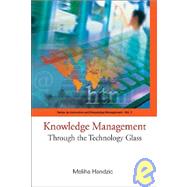
| Preface | v | ||||
| Part I Introduction: Exploring the Role of Technology in Knowledge Management | |||||
|
3 | (18) | |||
|
4 | (1) | |||
|
5 | (6) | |||
|
11 | (2) | |||
|
13 | (4) | |||
|
17 | (1) | |||
|
17 | (4) | |||
|
21 | (20) | |||
|
22 | (1) | |||
|
23 | (2) | |||
|
25 | (7) | |||
|
32 | (3) | |||
|
35 | (1) | |||
|
36 | (5) | |||
| Part II Codification Technologies: Supporting Knowledge Storage and Finding | |||||
|
41 | (16) | |||
|
42 | (1) | |||
|
43 | (1) | |||
|
44 | (1) | |||
|
45 | (5) | |||
|
50 | (2) | |||
|
52 | (1) | |||
|
53 | (1) | |||
|
54 | (3) | |||
|
57 | (16) | |||
|
58 | (1) | |||
|
59 | (1) | |||
|
60 | (3) | |||
|
63 | (4) | |||
|
67 | (3) | |||
|
70 | (1) | |||
|
70 | (3) | |||
|
73 | (16) | |||
|
74 | (1) | |||
|
75 | (3) | |||
|
78 | (1) | |||
|
79 | (6) | |||
|
85 | (1) | |||
|
86 | (3) | |||
|
89 | (20) | |||
|
90 | (1) | |||
|
91 | (2) | |||
|
93 | (5) | |||
|
98 | (3) | |||
|
101 | (1) | |||
|
102 | (7) | |||
| Part III Personalisation Technologies: Supporting Knowledge Creation and Sharing | |||||
|
109 | (16) | |||
|
110 | (1) | |||
|
111 | (4) | |||
|
115 | (3) | |||
|
118 | (4) | |||
|
122 | (1) | |||
|
123 | (2) | |||
|
125 | (16) | |||
|
126 | (1) | |||
|
127 | (3) | |||
|
130 | (5) | |||
|
135 | (1) | |||
|
136 | (5) | |||
|
141 | (12) | |||
|
142 | (1) | |||
|
143 | (2) | |||
|
145 | (5) | |||
|
150 | (1) | |||
|
151 | (2) | |||
|
153 | (18) | |||
|
154 | (1) | |||
|
154 | (2) | |||
|
156 | (5) | |||
|
161 | (5) | |||
|
166 | (1) | |||
|
167 | (4) | |||
| Part IV Complete KM Solutions: Integrated Systems and Technologies | |||||
|
171 | (18) | |||
|
172 | (1) | |||
|
173 | (2) | |||
|
175 | (5) | |||
|
180 | (6) | |||
|
186 | (1) | |||
|
187 | (2) | |||
|
189 | (18) | |||
|
190 | (1) | |||
|
190 | (8) | |||
|
198 | (3) | |||
|
201 | (2) | |||
|
203 | (1) | |||
|
204 | (3) | |||
|
207 | (14) | |||
|
208 | (1) | |||
|
209 | (1) | |||
|
210 | (8) | |||
|
218 | (1) | |||
|
218 | (3) | |||
|
221 | (18) | |||
|
222 | (1) | |||
|
223 | (5) | |||
|
228 | (4) | |||
|
232 | (1) | |||
|
233 | (6) | |||
| Part V Issues and Challenges: Present and Future | |||||
|
239 | (16) | |||
|
240 | (1) | |||
|
240 | (4) | |||
|
244 | (2) | |||
|
246 | (4) | |||
|
250 | (1) | |||
|
251 | (4) | |||
|
255 | (14) | |||
|
256 | (1) | |||
|
257 | (4) | |||
|
261 | (4) | |||
|
265 | (1) | |||
|
266 | (3) | |||
| Index | 269 |
The New copy of this book will include any supplemental materials advertised. Please check the title of the book to determine if it should include any access cards, study guides, lab manuals, CDs, etc.
The Used, Rental and eBook copies of this book are not guaranteed to include any supplemental materials. Typically, only the book itself is included. This is true even if the title states it includes any access cards, study guides, lab manuals, CDs, etc.